Do your students hesitate when you ask, “What is the main or central idea of this source?” Why?
There may be a couple of reasons.
Many students have not had enough experience with identifying main ideas to identify them easily. And they may have only a superficial understanding of key vocabulary in a main idea. In a main idea statement like “Mary Fields was courageous,” students may not really understand what courageous means. If I ask, “What does courageous mean?” I may get a response like, “It means to be brave” — a synonym or “she was courageous when she…”–an anecdote. We don’t hear students saying, “Courageous is when you’re willing to face an obstacle or a difficulty without fear.”
Liberate your students from these troubles. Give them a main idea for the text–with a clearly defined concept like “extraordinary” or “courageous” and then provide time for them to grapple with identifying and explaining supporting details. With enough experiences like this, they will begin to identify and explain main ideas more easily.
Last week I had the honor of teaching a class of 5th grade students who are studying the American West. We engaged in close reading and writing in response to four paragraphs in an essay on Mary Fields–an extraordinary historical figure described in the book Wild Women of the West by Jonah Winter.
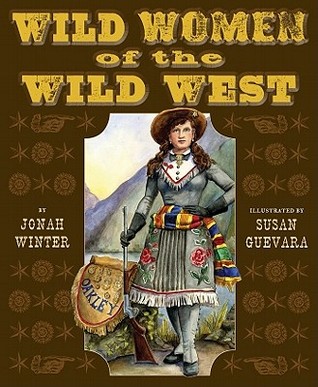
Below is a description of the three-phase lesson.
Phase 1 Meet the Source
The teacher read aloud the essay about Mary Fields as well as several other essays in Winter’s book. I handed out a copy of the essay to each student and asked them to review by reading silently. I also asked them to number the paragraphs – because we would only be reading closely paragraphs 4-7. I felt like these paragraphs were worthy of rereading and provided enough meat for our discussion and written responses.
Phase 2 Closely Read with a Purpose
I introduced the word extraordinary and set a clear purpose for close reading – Why might we consider Mary Fields to be an extraordinary person? I chose the Tier Two vocabulary word extraordinary because I think this is an idea that students will recognize in a lot of texts they read about the American West. See my definition in the image below, posted for all students to view. After a brief discussion of the word extraordinary, I posed the purpose for close reading and asked the students to write the purpose across the top of their copy of the essay – like I had done on my copy projected by the doc camera. (See second image below.)
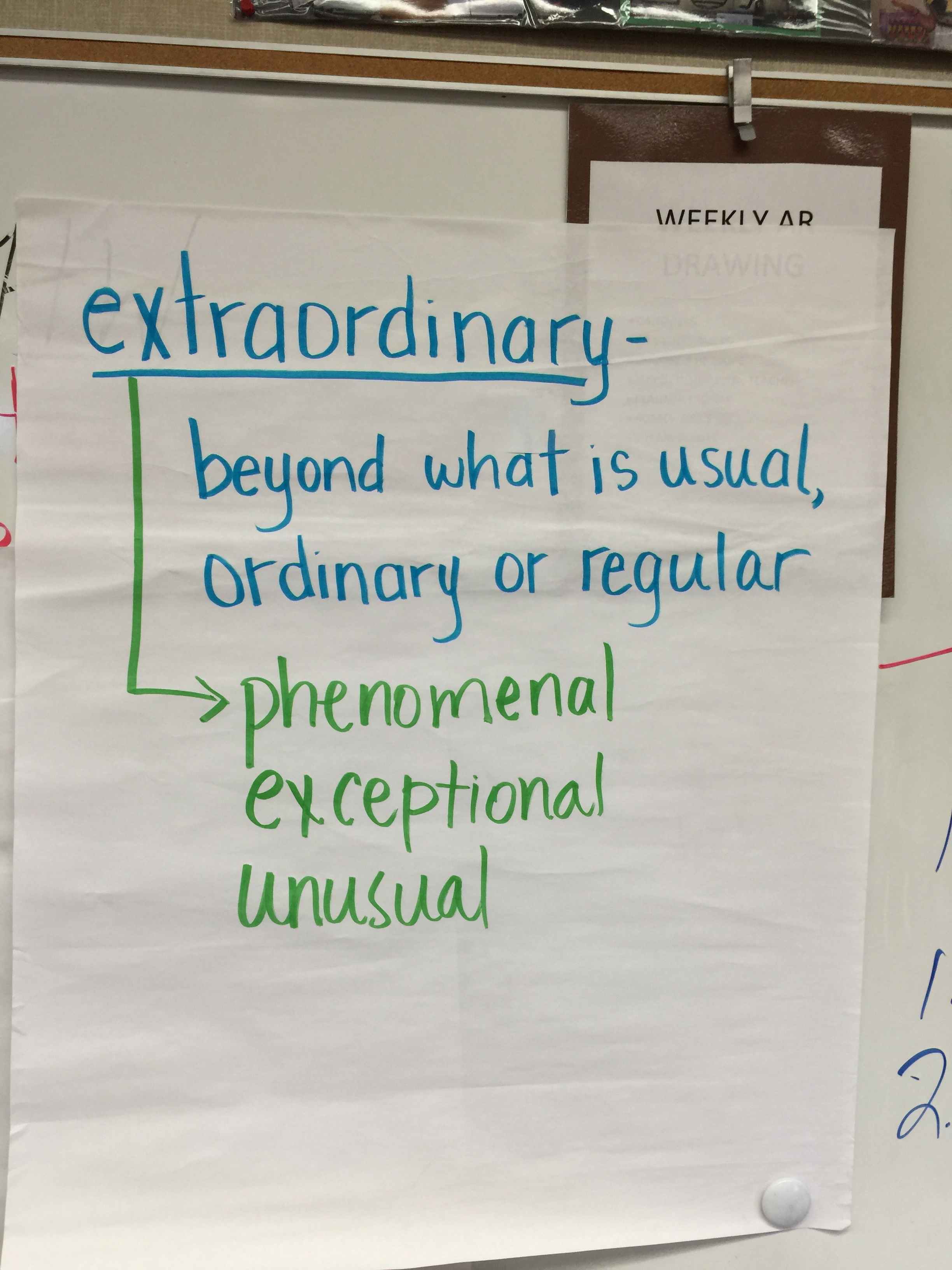
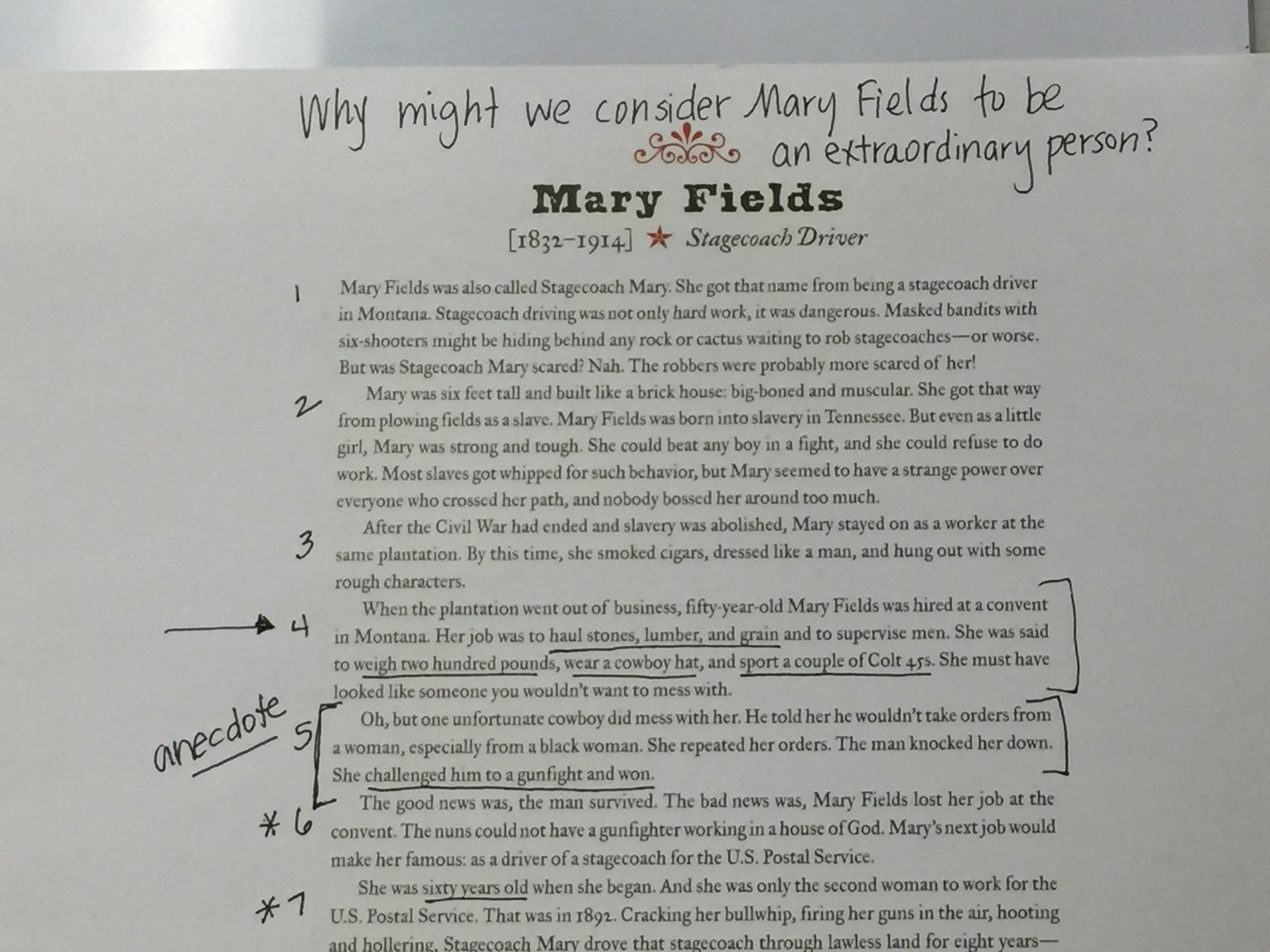
With the purpose in mind and the essay projected, I read aloud paragraph #4 and then thought aloud about details in the first two sentences. I explained why I would NOT underline any details in the first sentence – there were no details that really implied Fields was extraordinary. I thought aloud about how I might underline “haul stones, lumber, and grain and supervise men” and explained why I would choose those details – because these jobs are not normally what a woman in that period would have been doing.
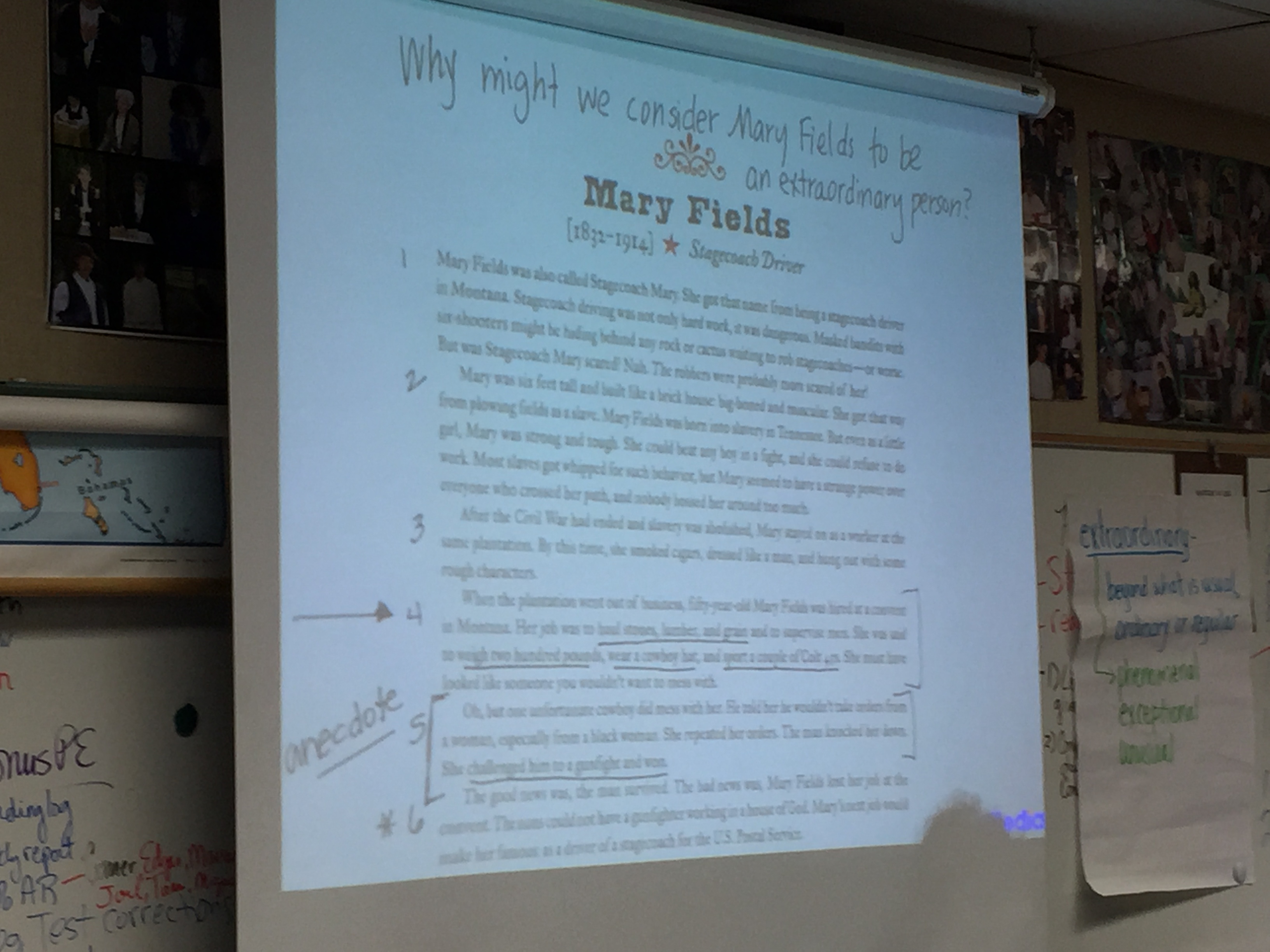
Then I began to release control. I asked students to read and think about the details in the next sentence. I asked them to explain to a partner why those details would support the idea that Fields was extraordinary. We continued through paragraph #7.
Phase 3 Write a Response
Next I engaged the students in shared writing of a main idea statement, a definition of the term “extraordinary,” a supporting detail, and an explanation of that supporting detail. For the supporting detail and explanation, I elicited responses from the students and then helped individuals craft a sentence that I could write.
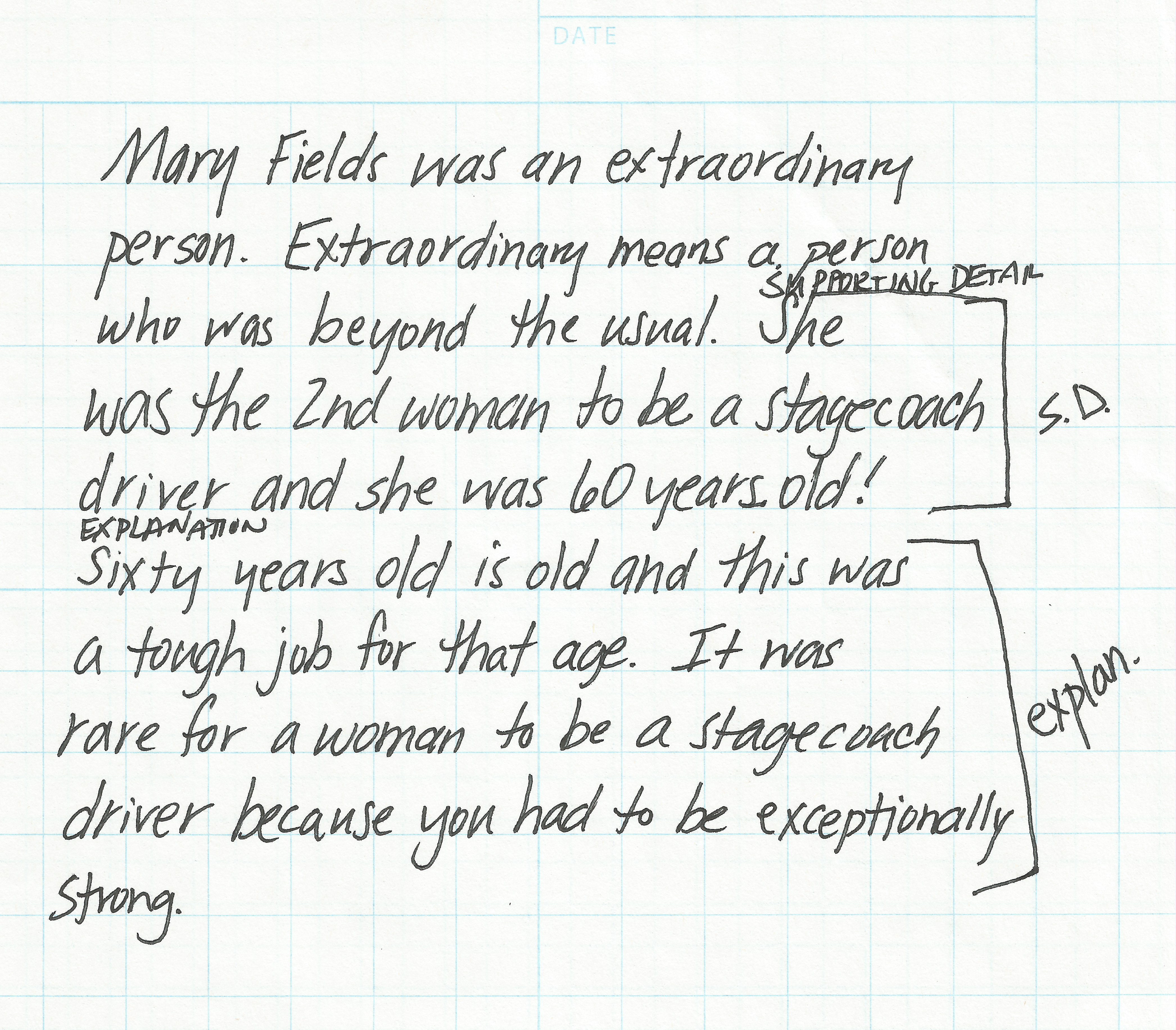
The students followed by choosing a different detail to write about including explaining how this detail supported the main idea–on a sticky note. Below are some examples. As usual, there were some students who stated a detail and their explanation made sense, BUT there are always others who need further instruction!!! That’s the way it should be if I’m in their zone of proximal development, right? What I learn from their responses can inform my next lesson–probably with another text on an historical figure and an opportunity to grapple with the term extraordinary.
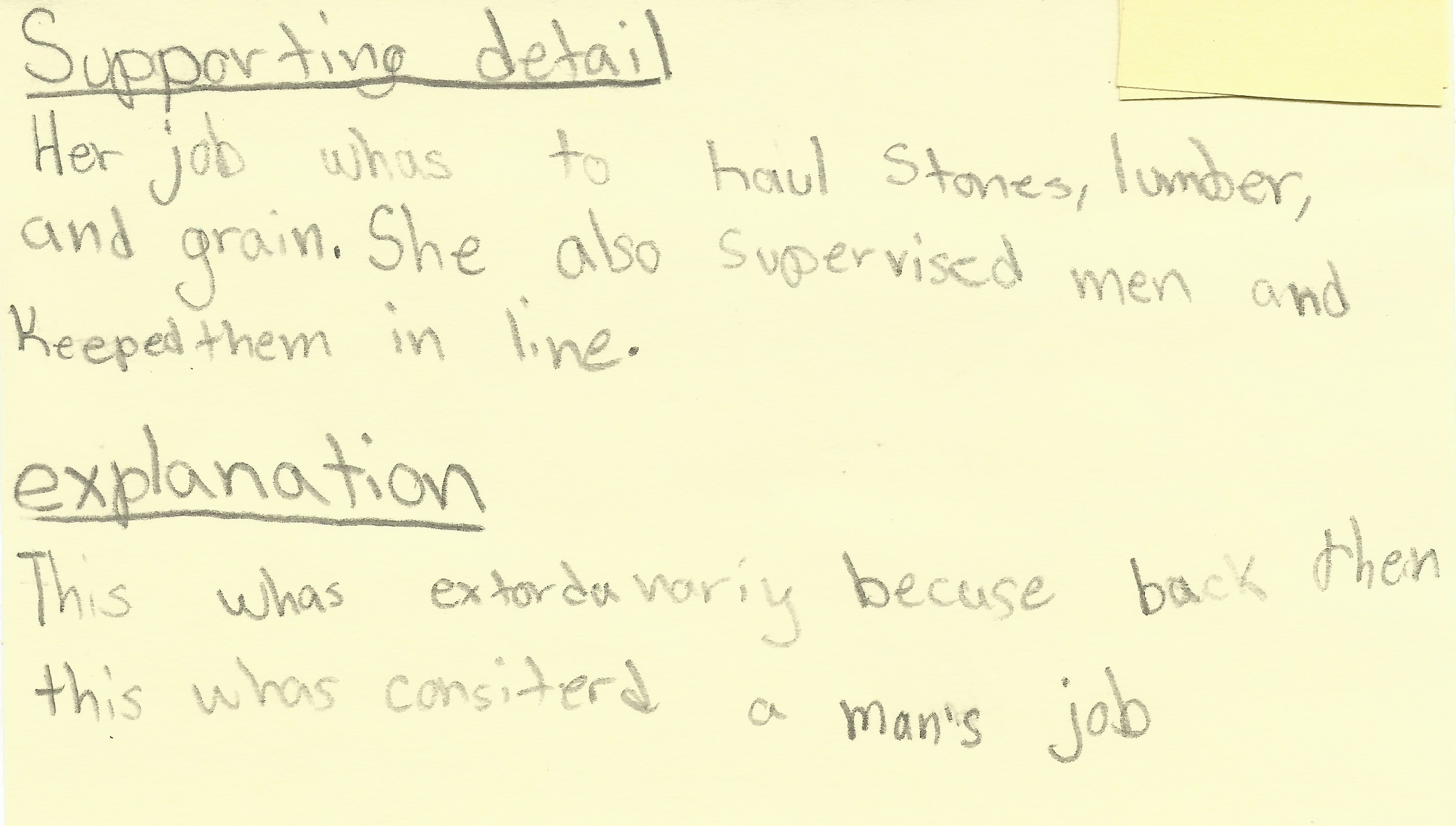
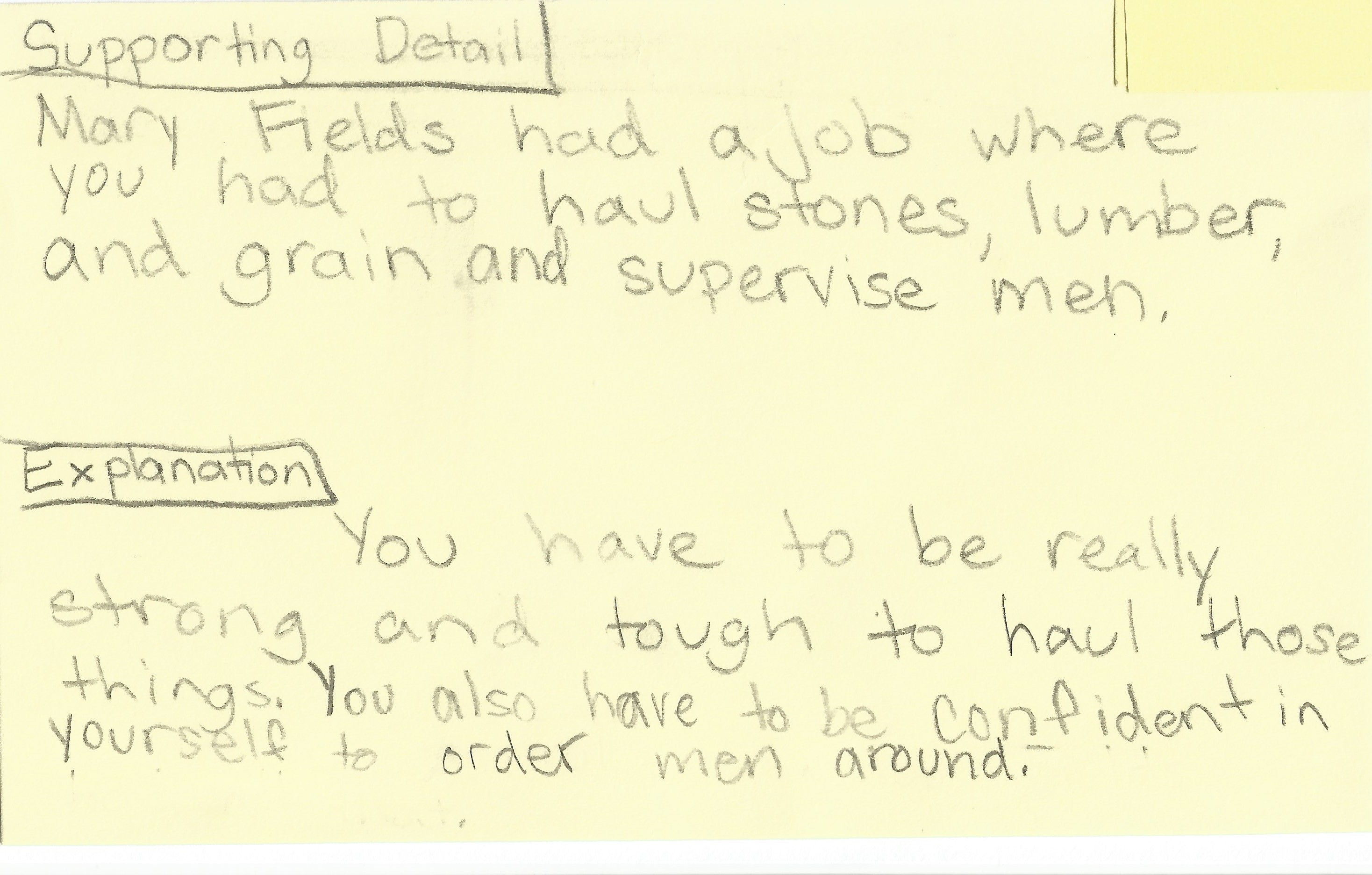
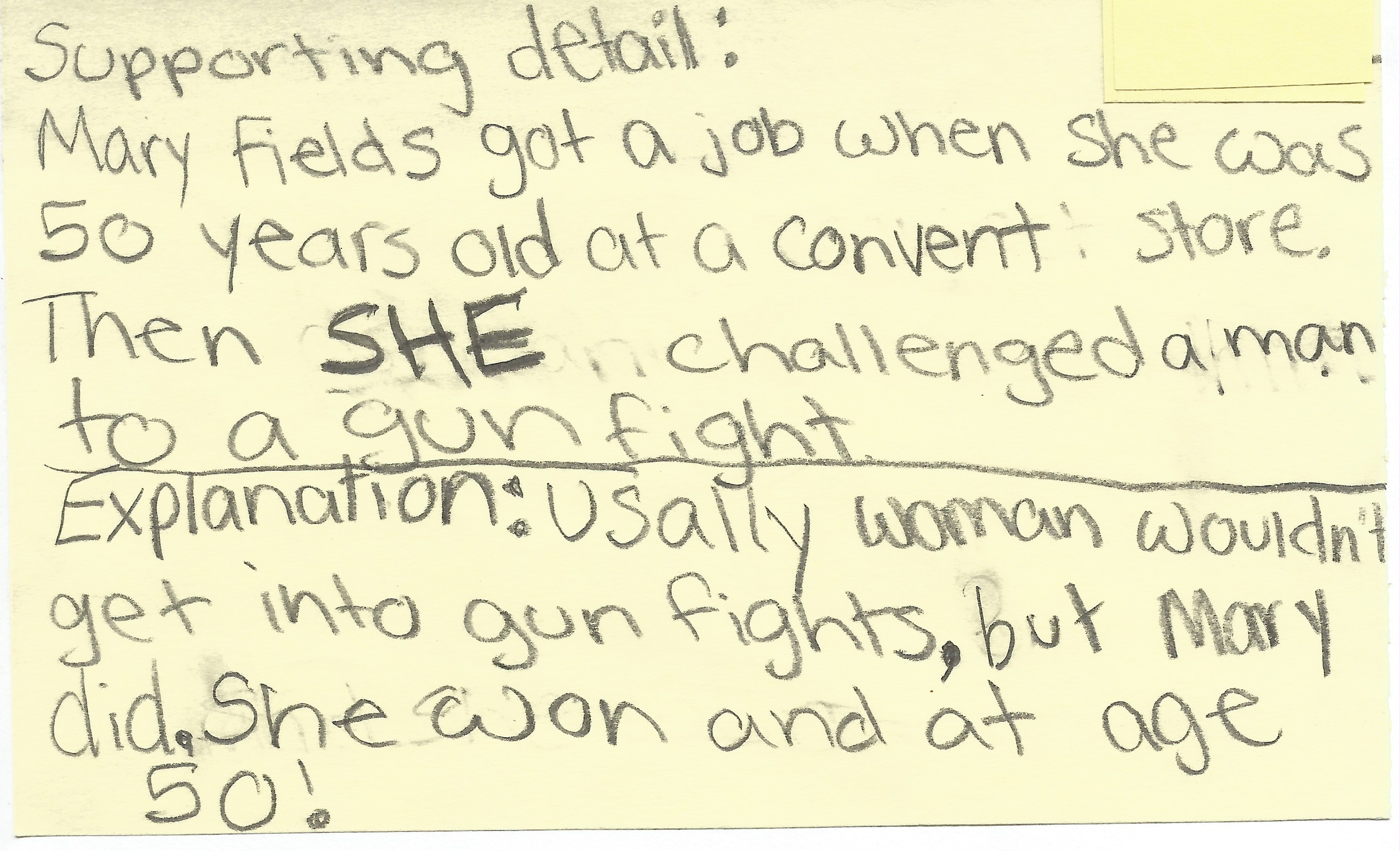
We closed by sharing in small groups. I included asking the students to check their peers’ writing to make sure their reasoning made sense and then to offer feedback as needed.
Hope this helps.
S
UPDATED 2/17/2021
